#Kunst des fechtens
Explore tagged Tumblr posts
Text
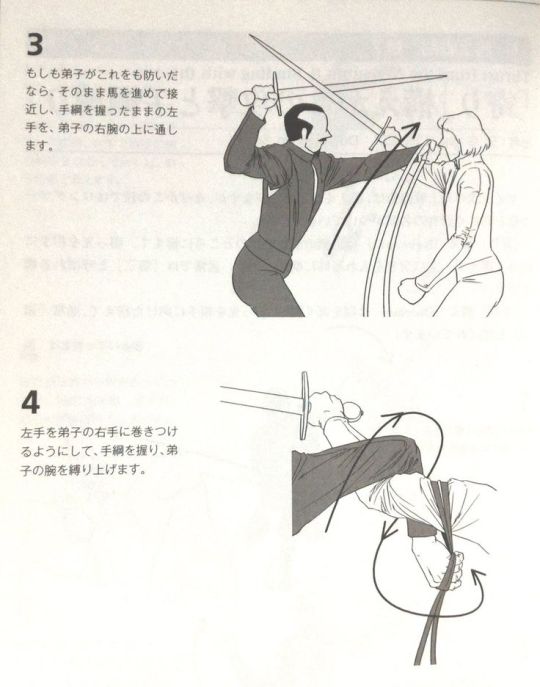
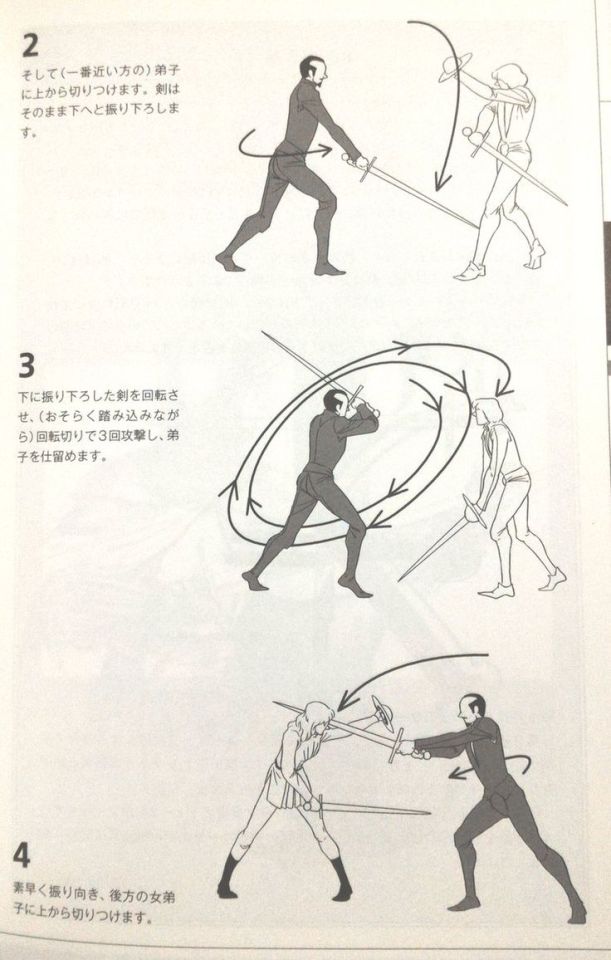

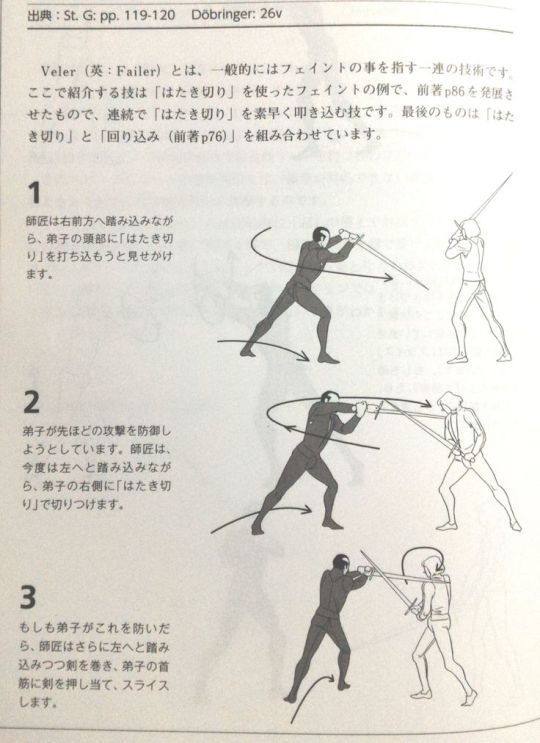
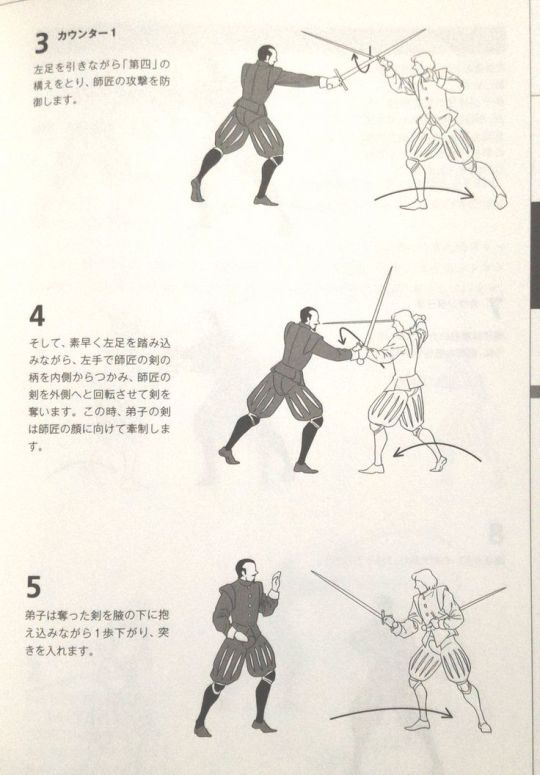
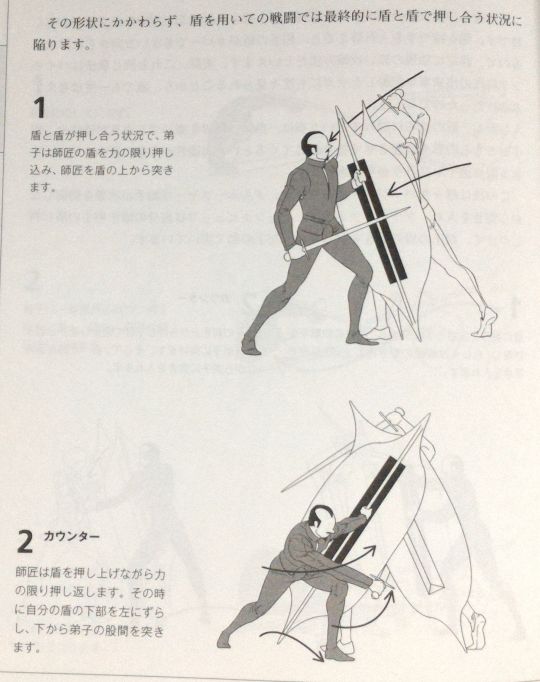

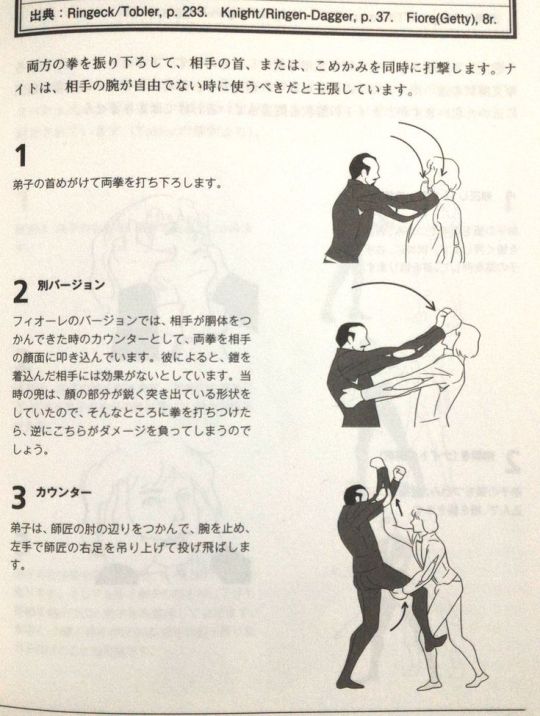

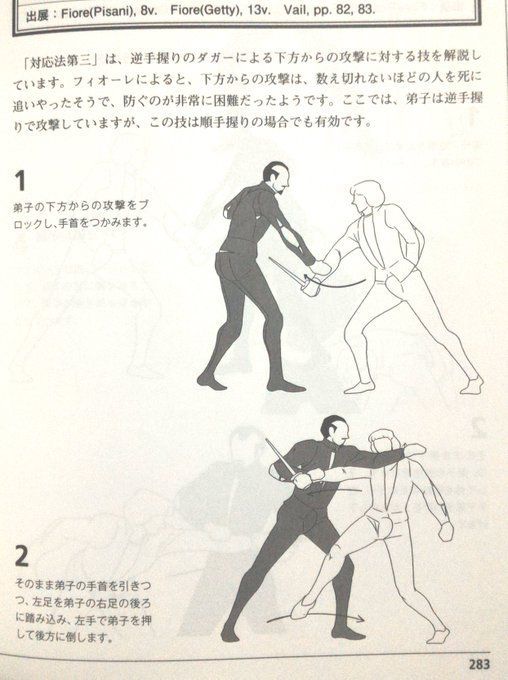
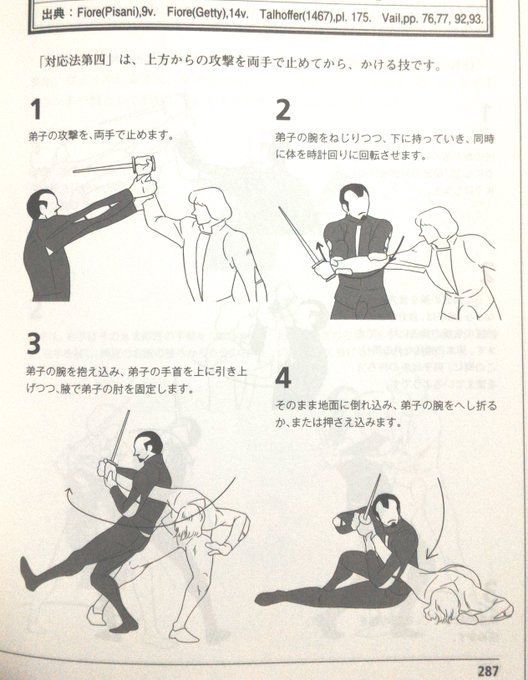
I need some help identifying the book where these came from. The illustrations are pretty sweet! EDIT: it's "The Martial Arts of Medieval Europe by Ryuta Osada" 中世ヨーロッパの武術 (by 長田 龍太) https://www.amazon.co.jp/-/en/%E9%95%B7%E7%94%B0-%E9%BE%8D%E5%A4%AA/e/B08JVK5R9W/ref=dp_byline_cont_book_1
#hema#historical european martial arts#HMA#historical#martial arts#sword#swordplay#japanese#manual#treatise#fiore#wallerstein#i33#marozzo#persian#ringen#abrazare#armizare#kunst des fechtens#kdf
96 notes
·
View notes
Video
youtube
A great video going over some of the most important techniques and principles of The Art of Combat or ‘Kunst Des Fechtens’ also known as KDF, but also tying those to more general mechanical groupings as well as positional situations that can help people connect the dots between various different moves. You can have different interpretations of historical systems than Daniel Pope(the person giving the lecture) but even just trying to apply this sort of systemic overview may help you figure out some things about fencing and how to think about it.
“ This in-class discussion from earlier this year is a fairly long and rambling discussion in which we broke out the trusty whiteboard markers to discuss some fencing theory relating to Meyer and Liechtenauer, but relevant to all fencing really. As our club isn't in training, I'm hoping that at least some of you will revisit the video because we haven't been able to revisit it in person. In essence, if we can reduce the exemplars in the text to general principles we find there's a lot less to think about while fencing. It's important to remember that these are generalisations - some of the genaral "rules" cited should never ben considered "laws" - you can break the rules all the time while fencing - as long as you know why! “
Here’s also another post overviewing KDF concepts in a more general framework that’s a bit less focused with mechanics and a bit more with the philosophy around it all and practical tactical issues as well that you may enjoy.
If you are interested in learning how to use a longsword check out these few links.
And here’s a masterpost about Joachim Meyer if you’re interested in his system specifically.
For anyone who hasn’t yet seen the following links:
Some advice on how to start studying the sources generally can be found in these older posts
Remember to check out A Guide to Starting a Liberation Martial Arts Gym as it may help with your own club/gym/dojo/school culture and approach.
Check out their curriculum too.
Fear is the Mind Killer: How to Build a Training Culture that Fosters Strength and Resilience by Kajetan Sadowski may be relevant as well.
“How We Learn to Move: A Revolution in the Way We Coach & Practice Sports Skills” by Rob Gray as well as this post that goes over the basics of his constraints lead, ecological approach.
Another useful book to check out is The Theory and Practice of Historical European Martial Arts (while about HEMA, a lot of it is applicable to other historical martial arts clubs dealing with research and recreation of old fighting systems).
Trauma informed coaching and why it matters
Why having a systematic approach to training can be beneficial
Why we may not want one attack 10 000 times, nor 10 000 attacks done once, but a third option.
How consent and opting in function and why it matters.
More on tactics in fencing
Open vs closed skills
The three primary factors to safety within historical fencing
Worth checking out are this blogs tags on pedagogy and teaching for other related useful posts.
And if you train any weapon based form of historical fencing check out the ‘HEMA game archive’ where you can find a plethora of different drills, focused sparring and game options to use for effective, useful and fun training.
For more on how to use youtube content for learning historical fencing I suggest checking out these older posts on the concept of video study of sparring and tournament footage.
Consider getting some patches of this sort or these cool rashguards to show support for good causes or a t-shirt like to send a good message while at training.
19 notes
·
View notes
Text
"Welche Kampfkünste kennst du?" And he was all "Ja."
#German Martial Arts#Fencing#kampfkuntse#Die Kunst des Fechtens#Paulus Hector Mair#The Locked Tomb#Its totally related Gideon Would LOVE this guy#Opus Amplissimum de Arte Athletica#Augsburg#bavaria#deutschland#Early New High German#Party hard#aristocrat#when hobbies become ways of life
1 note
·
View note
Note
Really like/relate to your tags about everybody perking up when they hear you swordfight and losing interest immediately. and meanwhile you're like, "no, you don't understand, this is so important to me, i spent 3 years practicing this..."
(What discipline do you do? i don't do HEMA but it's really cool)
I'm a HEMA (Historical European Martial Arts) practitioner! I'm primarily trained in longsword, with a focus on the early Kunst des Fechtens styles described by Ringeck, pseudo-von Danzig, Lew, and other early contemporaries/students of Liechtenhauer. I also enjoy single-stick although I'm not amazing at it, and I love Destreza even though I am terrible at it.
(In plain English: I am quite good at fighting with unarmored longsword, ok at fighting with a single handed sword (no shield), and am bad at rapier.)
8 notes
·
View notes
Text
On Liechtenauer, Martial Arts, and a specific definition of winning.
To love for a lifetime is to fall in and out of infatuation. To see faults and determine to continue to put in the effort. It is to find yourself exasperated by the flaws in the place your affection is vested, only to come around again and remember where that love grew from to begin with. This essay is going to be about HEMA generally, about Kunst des Fechtens specifically, and about old books and why I don’t think anything passed down can belong to you.
This essay is going to be a series of disjointed thoughts that may or may not tie together at the end. There will be no citations, no references to specific pieces of text to prove a point. I’m not going to back anything up with data, and I’m not going to point to a specific part of something written and say “this is proof of what I mean.” This is no more and less than one person’s opinion, based purely on feelings and experience and anecdotes, for whatever that’s worth to the reader.
I have three books in my office that are over one hundred years old. Of these, one is a copy of Meditations by Marcus Aurelius. It does not actually belong to me, but it was loaned by a friend who moved out of state before I could give it back. It is beautiful and thought provoking, but—and this will be relevant later—it does not actually belong to me. It’s on-loan, even if that loan is extended. The second of these books is a copy of the collected poetry of Sir Walter Scott. I have not read it, mostly because I am afraid that it will fall apart if I flip too thoughtlessly through its pages. I found it at an antique store ten years ago, and I did not realize how precious it was until I got home, where I discovered a letter from a father to his daughter written in the early 1900’s, and a perfectly preserved rose pressed between the pages. I do not want to damage either, so I keep them where I found them. They are in my keeping, but like the first book, they do not feel like mine.
The third book is a copy of the Rubaiyat of Omar Khayyam. I had a weird introduction to this book, which I have also read many times. When I was seventeen I was standing in a grocery aisle in Oregon, looking at beer that I couldn’t legally drink yet. Out of the blue, an old man I had never met approached me and started quoting from the poems. I don’t remember exactly what stanza—I think it was one of the ones warning people about drinking too much—but it stuck in my head and over the years I have acquired multiple copies, though none are as rare as this one. Even though I found it in a box of old books a friend had in their trunk, this one, like all the others, feels like a gift that I need to safeguard, until someday I give it to someone else.
I do not think that old things truly belong to us. Especially not those that have been passed down, and I think that treating them like possessions to be altered or discarded at will is a very consumerist way of thinking about things that should have more value. Especially when those things were created with blood, sweat, and tears, and when their existence was paid for in lives. Even if those lives were ended a long time ago. Even with treasured family heirlooms or old things that we stumble across, we are far more transient than they are, and at most we only keep them for a little while.
I started studying HEMA in 2008 with Fiore, and I transitioned to training Kunst des Fechtens exclusively in 2015. Liechtenauer’s art occupies a strange space, as far as Martial Arts go. Like the majority of earlier HEMA sources, it does not possess a living lineage of teacher-to-student transmission. What we have as practitioners is a series of texts expressing common principles and techniques, with only hints and bits of secondary and primary sources that offer suggestions as to the traditions that surrounded these arts when they were living. Because we are working to recreate this art from what has been left to us, it is easy to imagine that what we are creating is wholly new and our own, and that we have the right to make it our own. It is a common sentiment in many modern martial arts that the goal of training is to create a fighter whose deepest skill is expressed by the number of wins in competition and freeplay, however that’s defined. A not uncommon line of thought in many HEMA circles, including ones to which I am very close, is that creating great fencers, great fighters, is the primary purpose of our study. In some cases the only purpose.
I don’t really think that way. I used to, or at least I used to think that I should, but I don’t anymore.
What distinguishes Liechtenauer from other sources for me is the same thing that changed how I look at HEMA and functionally at Martial Arts in general. More than a set of techniques, more than the Five Words or the Haupstuck themselves, it is a system that teaches understanding of its subject material in a very layered way. I know consensus on this isn’t settled, but it’s always been my impression that the Zettel and several of the glosses are laid out in deliberate manner where techniques are unpacked in order to express the principles that they are trying to teach. Each section goes on to break down multiple ways to express the principle, and then the next section begins to unpack the next principle that the student will most benefit from learning in that order.
This layering of concept on top of concept, with later sections closing the loops that earlier ones began, immediately caught my attention, and years later it still has a hold on me. I think there is something deeply useful about the style of teaching that feels implicit in the text. We’re missing big parts, obviously, in-person pedagogy and the associated traditions that were associated with how the art was transmitted directly from teacher to student, but you can infer a lot from the structure of the texts. One of the things that stands out to me is that these aren’t just a formula for learning a martial art, but an expression of the writer’s understandings of how to learn to begin with.
And ultimately it has been this idea of understanding, itself, that’s come to shape how I think about not just Kunst des Fechtens, not just HEMA, but just about everything I approach in my life. The longer I do this, the less I give a shit about winning anything. The less I care about competing, or proving, or demonstrating the worth and value of this art. Some of that might be burnout, but I think the lion’s share of it is that as I’ve gotten older the value of what I’m doing has started to feel self-evident. This is something that, despite its severed lineage, was once a carefully guarded secret, an artform by which people lived and died. I don’t intend to wax romantic or melodramatic, but that weight means something. Immense and broad efforts were made through it’s two-century history to preserve and proliferate Liechtenauer’s art, and even though those works ultimately failed and the tradition died out, I feel strongly that those of us working with its remnants today owe it to the memory and spirit of those distant humans to respect the drops of blood and sweat staining the pages they wrote. The best way to honor this for me is to look at what they left behind, and dedicate my effort to understanding.
I talked earlier about how old things don’t belong to us. How what is old and has been passed down is on-loan, at least in an ideal world, because we are not its owners, but its caretakers. Through understanding, the Liechtenauer you study becomes not something you simply absorb and use as you choose, but a reframing of your mind that reshapes and reorganizes the flow of your thoughts. The ceiling on what a person can come to understand is so much higher than the accomplishments that are directly limited by physical health, age, ability, and athleticism. You can only win for so long, but your ceiling for deepening your learning is—if you’re lucky—limited only by your lifespan. Via this, the art expresses itself more and more through not only our arms and hands, but through how we think and feel and breathe. I don’t believe that any art-form can be grasped without allowing it to alter the fabric of which you’re stitched together, and when understood this way, not only does the art not belong to you, but it can’t.
Because the art expresses itself through you. You belong to it. It’s passing through you as you live your life, like the old books that come into your keeping to safeguard.
Until such time as you have to pass them on to someone else.
11 notes
·
View notes
Note
favorite treatise based purely on illustrations?
on the one hand, joachim meyer's kunst des fechtens is very well illustrated and communicates the techniques very well.
on the other hand, fiore dei liberi's flower of battle has a few pics of someone getting kicked in the balls
hard to say, really
5 notes
·
View notes
Photo
When I did Kunst des Fechtens longsword training one of the drills we had was literally "okay now this guy is just going to rush you swinging like he's never held a sword before, because in the unlikely event you have to swordfight for your life that's probalby what will happen and this is a martial art"
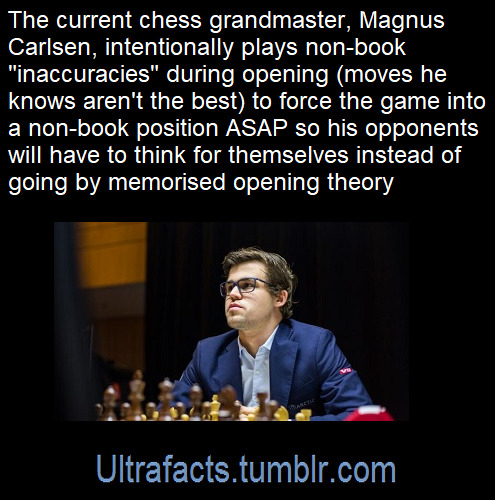
126K notes
·
View notes
Text
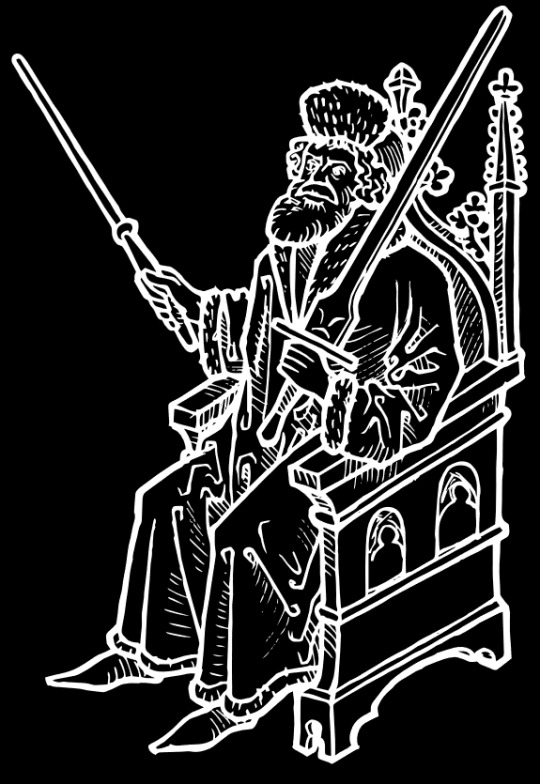
Esgrima Antigua e Histórica 101: ¿Quién éra Johannes Liechtenauer?
Johannes Liechtenauer (también Lichtnauer, Hans Lichtenawer) fué en el siglo catorce uno de los maestros de esgrima más reconocidos de la época dentro de lo que se conocería como la tradición alemana.
El MaestroLiechtenauer parece haber éstado impartiendo sus enseñanza a mediados y tarde en el siglo catorce. Pero la única nota biográfica que nos sobrevive es encontrada en el manuscrito GNM Hs. 3227a (circa 1400 de nuestra era). Siendo éste manuscrito el texto más antiguo que lee : “El Maestro Lichtenauer aprendió y dominó(el ate de la espada) a cavalidad y adecuadamente, pero no lo iventó el mismo, como se ha hecho ha dicho. Éste viajó atrav’’es de muchas tierras buscándo el verdadero y justo are, pues éste quería aprendérle y estudiárlo”
Su apellido indica que éra conocido como “Liechtenau”( escrito modernamente como Lichtenau). Hay varias localidades con dicho nombre. Basado en detalles descritos por autores relacionados a la tradición alemana colectivamente conocidos como la Sociedad Liechtenauer hay concenso sobre la posibilidad de que se refiriesen a Liechtenau en Nuremberg entre otras cinco posibles localidades del mismo nombre.
El Epítome (Zettel)
Los estudiantes de Lichtenauer preservaron sus enseñánzas en la forma de un poema mnemonico conocido colectivamente como Zettel( literalmente un recuénto breve). Más tarde en el siglo quince versos de éste poema se vuelven conocidos por gran parte de la región. Y ya en el siglo diez y séis son una parte integral de la tradición alemana de esgrima/combate.
La referencia más antigua conocida del Zettel (o zedel) se encuentra en el folio 9v del manuscrito Cod. 44 A 8 del 1452.:
“ Alhÿe hebt sich an dye zedel der Ritterlichen kunst des fechtens dye do geticht vnd gemacht hat Johans Liechtenawer der ain hocher maister In den künsten gewesen ist dem got genadig seÿ "Here begin the zedel of the knightly art of fencing, which were composed and made by Johannes Liechtenauer, who was a high master in the arts, and on whom God may have mercy."
Aparentemente el propósito del poema éra establecer una lista de mnemónicos que ayudásen al estudiante de la tradición a recordar conceptos que comúnmente se enseñarían en aquellos tiempos en forma oral casi exclusivamente. Desafortunadamente no incluye una explicación detallada, por el contrario los versos del Zettel han sido creados con la intención de ser crípticos. Se refieren a los mismos como las palabras secretas del maestro , por subsiguientes maestros y autores.
Los versos fueron tratados como el tronco de las enseñanzas atribuídas a Johannes Lichtenauer por sus seguidores. siendo el manuscrito Hs. 3227a nuestro ejemplo más temprano de ello seguido por tratados por Peter von Danzing zum Ingstdt, Jud Lew, y sigmund Schining ein Ringeck en el siglo 15. Éstos están organizados en coplas o cuartetas en ocasiones acompañadas por glosas(anotaciones) con explicaciones algo más detalladas sobre el significado del vérso.
El Zettel está organizado de la siguiente manera:
I. Introducción general al Arte del combate
II. Introducción general al combate con espada larga . Arma con la cual se blande a dos manos.
III.Un desgloce de diez y siete tecnicas o secciones también conocidas como las diez y siete máximas de Liechtenauer del combate con espada larga(espada a mano y media)
Comienza el poema con la siguiénte estrofa:
“ Jung Ritter lere / got lip haben / frawen io ere / So wechst dein ere / Uebe ritterschaft und lere / Kunst dy dich czyret / vnd in krigen sere hofiret”
“Young knight, learn to love God and honour noble women, so grows your honour; practice chivalry and learn art which adorns you and will glorify you in battle.”
“ Jóven caballero, aprende a amar a Dios y honrar a las damas, para que así crezcas en honor; practica el arte de la caballería el cual te exalta y brinda gloria en batalla”
Las diez y siete máximas de Liechtenauer (Hauptstücke) son:
*Los Cinco Golpes o cortes maestros o cortes secretos: 1. “Zornhau”, 2. “Krumphau”, 3. “Zwerchhau”, 4. “Schielhau”, 5. “Scheitelhau”
*Las Cinco Guardias (6)(Huten ó Leger), Arado (Pflug), Buey (Ochs), Desde el Techo(Vom Tag) y El tonto (Alber).
*Las técnicas listadas son: 7. Versetzen, 8. Nachreisen, 9. Überlaufen, 10. Absetzen, 11. Durchwechseln, 12. Zucken, 13. Durchlaufen (grappling), 14. Abschneiden, 15. Händedrücken 16.Cuatro Hängen, 17. Veinte y cuatro Winden.
Al Maestro Liechtenauer de le atribuyen ademés similares enseñanzas de otras disciplinas y armas como la lucha, daga y combate montado.
La Sociedad Liechtenauer
La Sociedad Liechtenauer (Geselschaft Liechtenauers)es como comúnmente se le conoce a una lista de diez y siete maestros en la introducción de tres de las copias mas antiguas del manual de esgrima de Paulus Johann Paulus Kal.
No esta claro si alguna vez existió una organización , pero se cree y especula que la lista de estudiantes es un memorial póstumo de los asociados al maestro.
Paulus Kal lists lista a los siguientes maestros como miembros de la excelsa sociedad:
Hanns liechtenawer( Johannes Liechtenauer) , peter wildigans von glacz (Peter Wildigans de Glatz), peter von tanczk (Peter von Danzig ), hanns spindler von cznaÿm (Hans Spindler de Znaim ), lamprecht von prag (Lamprecht de Prague ), hanns seyden faden von erfürt (Hans Seydenfaden de Erfurt ), andre liegniczer (Andre Lignitzer ), iacob liegniczer (Jacob Lignitzer ), sigmund amring( Sigmund Schining ein Ringeck), hartman von nurñberg (Hartman de Nuremberg) , martein hunczfeld ( Martin Hundsfeld), hanns pägnüczer (Hans Pegnitzer), phÿlips perger ( Philips Perger), virgilÿ von kracå (Virgil de Kraków ), dietherich degen vechter von brawnschweig (Dieterich, el peleador de daga de Brunswick ), ott iud, der der her[e]n von o[e]sterreicher ringer gewessen ist.( Ott Jud, quién era un luchador de los señores de Austria )
Enlace al Manuscrito Cod.HS.3227a ó Hanko Döbringer fechtbuch de 1389:
0 notes
Text
Hofjagd und Rüstkammer
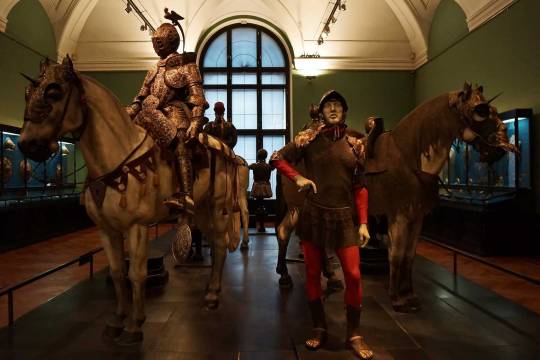
Hofjagd und Rüstkammer
Die Faszination der Hofjagd- und Rüstkammer WienDie Hofjagd- und Rüstkammer in Wien ist ein Juwel unter den kulturellen Schätzen Österreichs. Mit einer faszinierenden Geschichte, beeindruckenden Ausstellungen, einzigartigen Besonderheiten und spannenden Veranstaltungen bietet dieses Museum einen tiefen Einblick in die prächtige Welt der Habsburger Monarchie.Geschichte:Die Hofjagd- und Rüstkammer hat ihre Wurzeln in der reichen Geschichte der Habsburger Dynastie, die über Jahrhunderte hinweg das Schicksal Mitteleuropas prägte. Gegründet im 15. Jahrhundert, diente die Sammlung ursprünglich dazu, die reichen Traditionen der Hofjagd zu dokumentieren und die kostbaren Rüstungen und Waffen der Habsburger zu bewahren.Im Laufe der Jahrhunderte erweiterte sich die Sammlung und umfasst heute eine beeindruckende Vielfalt an Objekten, die die militärische Geschichte und den Prunk vergangener Epochen widerspiegeln. Von prachtvollen Rüstungen bis zu kunstvollen Jagdtrophäen erzählt die Hofjagd- und Rüstkammer die Geschichte von Krieg und Jagd, Macht und Prestige.Ausstellungen:Die Ausstellungen der Hofjagd- und Rüstkammer bieten einen faszinierenden Einblick in das Leben am Hof der Habsburger. Prächtige Rüstungen, kunstvoll gearbeitete Waffen und exotische Jagdtrophäen lassen die Besucher in die Welt vergangener Jahrhunderte eintauchen. Eine besondere Attraktion ist die Sammlung von Turnierwaffen, die die ritterlichen Wettkämpfe und Festlichkeiten des Mittelalters lebendig werden lassen.Die Ausstellung ist nicht nur eine Sammlung von Objekten, sondern auch eine Reise durch die Geschichte der Habsburger Monarchie. Interaktive Elemente und multimediale Präsentationen vermitteln ein lebendiges Bild der Vergangenheit und machen den Besuch zu einem unvergesslichen Erlebnis.Besonderheiten:Was die Hofjagd- und Rüstkammer besonders macht, sind die einzigartigen Objekte, die hier zu finden sind. Zu den Highlights zählen die prächtigen Rüstungen von Kaiser Maximilian I., die mit kunstvollen Gravuren und Verzierungen beeindrucken. Auch die Sammlung von Jagdwaffen, darunter Gewehre und Armbrüste aus verschiedenen Epochen, ist von großem historischem und kulturellem Wert.Ein weiteres Highlight ist der "Goldene Saal", ein prunkvoller Raum, der mit kunstvollen Wandteppichen und Deckengemälden geschmückt ist. Hier wurden einst festliche Bankette und Empfänge abgehalten, und heute können Besucher die prächtige Atmosphäre vergangener Zeiten hautnah erleben.Veranstaltungen:Die Hofjagd- und Rüstkammer organisiert regelmäßig Veranstaltungen, die das historische Ambiente lebendig werden lassen. Von thematischen Führungen bis zu speziellen Events, die die Kunst des mittelalterlichen Fechtens präsentieren, gibt es immer etwas Spannendes zu erleben. Besonders beliebt sind auch die Sonderausstellungen, die zeitlich begrenzte Einblicke in bestimmte Aspekte der Sammlung bieten.Persönliches Fazit:Ein Besuch in der Hofjagd- und Rüstkammer ist eine faszinierende Reise durch die Geschichte und Pracht vergangener Zeiten. Die beeindruckende Sammlung, die liebevoll präsentiert wird, lässt das Erbe der Habsburger Monarchie aufleben. Die Vielfalt der Ausstellungsstücke, die lebendige Inszenierung und die besonderen Veranstaltungen machen diesen Ort zu einem Must-See für Geschichtsinteressierte und Kulturbegeisterte.Die Hofjagd- und Rüstkammer ist nicht nur ein Museum, sondern ein lebendiges Zeugnis der kulturellen Vielfalt und des Erbes Österreichs. Der Besuch öffnet ein Fenster in eine Welt voller Pracht, Macht und Tradition. Tauchen Sie ein in die Geschichte und lassen Sie sich von der Schönheit vergangener Zeiten verzaubern. Ein Besuch in der Hofjagd- und Rüstkammer ist eine Reise durch die Epochen, die lange in Erinnerung bleiben wird.
Öffnungszeiten
Die genauen Öffnungszeiten der Hofjagd- und Rüstkammer Wien sind wie folgt:Dienstag bis Mittwoch: 10:00 bis 18:00 Uhr Donnerstag: 10:00 bis 21:00 Uhr Freitag bis Sonntag: 10:00 bis 18:00 UhrDas Museum ist an Montagen geschlossen.Bitte beachte, das die Öffnungszeiten hier nicht immer ganz aktuell sein könnten. Daher benutze bitte unten den Link "Offizielle Homepage" um genauere und aktuelle Öffnungszeiten zu erhalten.
Lageplan
Benutze bitte den direkten Link oben "Routenplaner" um Infos für die Erreichbarkeit usw. zu erhalten.
Weitere Infos
- Weitere Angebote für Wien - Weitere Museen in Österreich - Offizielle Homepage - Adresse:Hofjagd- und RüstkammerHeldenplatz, 1010 WienOder suche hier weitere Vorschläge für dich Wetter Berlin Über einen Kommentar würden wir uns sehr freuen. Erzähl uns wie es dir dort gefallen hat, oder ob es vielleicht ein Reinfall war. Read the full article
0 notes
Link
Hello, all! It’s been a while since I’ve posted directly on Tumblr; nowadays it’s mostly stuff that auto-populates from my Instagram account. But I wanted to let everyone know that I’m still alive and kicking, and still teaching swordplay! A very recent development with all that has been the launch of a Patreon page, which is a joint effort between myself and my associate/friend/student/co-producer Peter, of Squinting Rabbit Productions. Our goal is to create content for the global Historical European Martial Arts community that is high quality in terms of production value and content. Please support and share. We do this because we’re passionate about HEMA, and want to share that passion with all of you!
#HEMA#historical europen martial arts#historical fencing#fencing#martial arts#sword#swordplay#sword combat#longsword#liechtenauer#kunst des fechtens#teaching#training#education#film#filmography#art#support
8 notes
·
View notes
Quote
If you lead well, and counter right And finally, it’s in your sight, If you divide things as they are, Into three Wounders each apart. Hang the point in true and fair. Turn your sword then well from there. And eight turns there are, If you rightly regard, And each turn of the blade, Into three can be made: Twenty-four can be named, Though they’re one in the same. On both sides this concerns: Learn to step with Eight Turns Rate the bind, I implore: Soft or hard, nothing more.
More rhyming English Liechtenauer. It’s not perfect but nothing is
16 notes
·
View notes
Text
https://lokuzt.wixsite.com/la-espada-deshidrata/blog
I know no one ever reads blogs anymore, but I publish some stuff on ancient historical fencing every once in a while. It's all in Spanish, which might be useful as I don't see a lot of resources for this topic in my native language.
#me#sword#hema#espada#esgrima antigua#esrima histórica#HMA#Fiore dei Liberi#Armizare#Lichtenauer#Kunst des fechtens
0 notes
Video
youtube
A great video on some beats in the bolognese school of fencing, and while not everything is the same for some other systems we can definitely see similar actions, especially tactically within Meyer’s version of KDF(kunst des fechtens - art of combat), and these principles can be applied very similarly to various other weapons too.
Giovanni Dall'Agocchie is a great facebook group for folks interested in the various Bolognese sources and Ilkka Outo is a youtube channel with lots of information.
And Antonio Manciolino, Achilles Marozzo, Angelo Viggiani, Giovanni dall'Agocchie, Filippo Dardi, Guido Antonio di Luca and Anonimo Bolognese (MSS Ravenna M-345/M-346) are some useful wiktenauer pages to check out to learn more about the general systems of bolognese fencing.
The beats in the video and their tactical approach can definitely work nicely with the p-t-h concept from Meyer, here’s a post on the provoker-taker-hitter concept within dussack, Here’s also a recent post on the usage of the concept of provoker-taker-hitter in sparring with longswords. Here’s also another post overviewing KDF concepts in a more general framework that’s a bit less focused with mechanics and a bit more with the philosophy around it all and practical tactical issues as well that you may enjoy.
And here’s a masterpost about Joachim Meyer if you’re interested in his system specifically. For anyone who hasn’t yet seen the following links:
Some advice on how to start studying the sources generally can be found in these older posts
Remember to check out A Guide to Starting a Liberation Martial Arts Gym as it may help with your own club/gym/dojo/school culture and approach.Check out their curriculum too.
Fear is the Mind Killer: How to Build a Training Culture that Fosters Strength and Resilience by Kajetan Sadowski may be relevant as well.
“How We Learn to Move: A Revolution in the Way We Coach & Practice Sports Skills” by Rob Gray as well as this post that goes over the basics of his constraints lead, ecological approach.
Another useful book to check out is The Theory and Practice of Historical European Martial Arts (while about HEMA, a lot of it is applicable to other historical martial arts clubs dealing with research and recreation of old fighting systems).
Trauma informed coaching and why it matters
Why having a systematic approach to training can be beneficial
Why we may not want one attack 10 000 times, nor 10 000 attacks done once, but a third option.
How consent and opting in function and why it matters.
More on tactics in fencing
Open vs closed skills
The three primary factors to safety within historical fencing
Worth checking out are this blogs tags on pedagogy and teaching for other related useful posts.
And if you train any weapon based form of historical fencing check out the ‘HEMA game archive’ where you can find a plethora of different drills, focused sparring and game options to use for effective, useful and fun training.
For more on how to use youtube content for learning historical fencing I suggest checking out these older posts on the concept of video study of sparring and tournament footage.
Consider getting some patches of this sort or these cool rashguards to show support for good causes or a t-shirt like to send a good message while at training.
47 notes
·
View notes
Note

Hello Peter, I’ve been following you for like six years or something at this point and though I’m not on tumble much anymore, I still enjoy your content 😊 and today, I was glad I still remember you because I feel like you would be the perfect person to ask about these things I’ve seen in the park today. We were guessing that it’s some kind of like old timey weapons but they seem very impractical and honestly I don’t even have the words to google them. Could you help out a curious mind? 😊 best regards from Germany! Caroline
TL;DR - the answer to the original question ends with the first photo.
*****
Bestens Grüße aus Irland rechts zurück, und ich bin gerne behilflich sein!
They’re a practice weapon called a dusack (various spellings) for teaching how to use short cutting weapons. They were also used for exhibition combats fought to first blood between rival fencing schools, to show off who was best and attract more pupils. These combats were also about winning money, a bit like the prizefights of English swordsmen like James Figg.
The ones in your photo look like these, made by Purpleheart Armoury.

Dussacke were made of wood, leather or a combination of the two, but few (AFAIK no) historical examples have survived since a broken dussack went the same way as a broken bow, broken spear or axe: into the firewood-box. However there are any number of modern repros to take their place.


*****
Nobody’s quite sure of the dussack’s origins; it may have started as just a cheaper, safer training version of existing short cutty choppy sidearms - Messer, Bauernwehr, falchion and so on - but it (or at least its training version) may also have begun as an agricultural tool.
One candidate is a flax-scutching knife, used for processing hemp and linen all over Europe. Scutching involves beating away rotted outer stalks to free the eventually-cloth fibres inside and a metal knife was too severe, so scutching knives were made of wood.
Here’s one, with more at this Google Image link. There’s a definite dussack look to them.

Here are illustrations from ”Kunst des Fechtens”, a 1570 fight manual by Joachim Meyer which may (there were others) be what the two people in the park were working from.
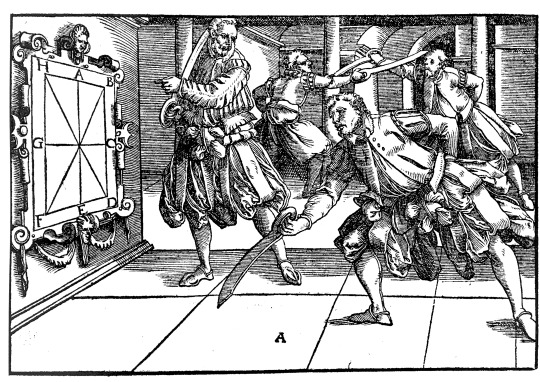


And here’s a handsome photograph from a seminar hosted by Cork Blademasters a few years ago.
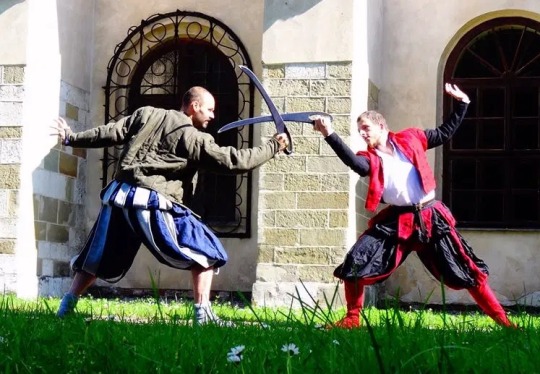
As I mentioned, the dussack was a safe practice version of a real weapon. Those ranged from simple barenaked bladies (cough) which might or might not have had a leather wrapping to cushion the grip...

...right through to elaborately hilted swords (German Düsagge, Bohemian tesak, Scandinavian tessack, Sinclair sabre, cutlass and so on) like these...



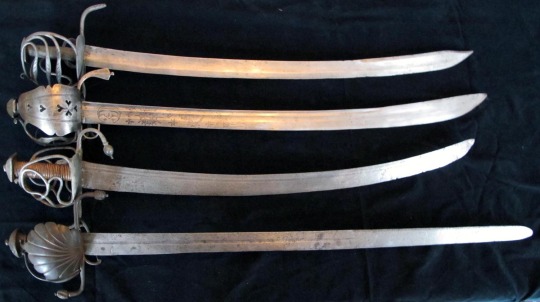
Hope this helps!
188 notes
·
View notes
Text
❆ ᴘᴇʀꜱᴏɴᴀʟɪᴛʏ
↳ Adalfieri was a fairly easy going man, with the ability to make the best out of even the worst of situations. He simply ignored the bad parts of his own life, replacing them with good memories instead. He was incredibly intelligent, and constantly strived for more and more in terms of knowledge and experience.
The man’s moral code is awfully grey. There’s no real clear stance with him. He simply did what he thought is right, in any given moment— With absolute decision, and without regret. Whether that ends up hindering or helping others is lost on him.
Like his Parent— He had no real grasp on human emotions. He could neither identify them, or really feel them himself. It’s something that was always been curious to him, and something was always observing in the other servants, Giesbach, and even Karlheinz and Richter. Yet despite this lack of emotional intelligence, he was still someone that was a joy to be around. And someone that his friends were able to, and comfortable with, confiding in.
He would often seem indifferent, or perhaps maybe a bit antagonist towards Giesbach. A completely primal reaction to the man, that he never really understood. When spoken to, the passive aggressive tone was clear, paired with an antagonising smile. Yet towards everyone else— He seemed to be as bright as day. Truly a confusing, mysterious, and dangerous individual.
❆ ꜰᴇᴀʀꜱ
↳ Athazagoraphobia — the fear of forgetting someone or something, as well as a fear of being forgotten.
❆ ᴍʙᴛɪ
↳ ENTJ — Commanders are natural-born leaders. People with this personality type embody the gifts of charisma and confidence, and project authority in a way that draws crowds together behind a common goal. However, Commanders are also characterized by an often ruthless level of rationality, using their drive, determination and sharp minds to achieve whatever end they’ve set for themselves. Perhaps it is best that they make up only three percent of the population, lest they overwhelm the more timid and sensitive personality types that make up much of the rest of the world – but we have Commanders to thank for many of the businesses and institutions we take for granted every day.
ENTJs are strategic leaders, motivated to organize change. They are quick to see inefficiency and conceptualize new solutions, and enjoy developing long-range plans to accomplish their vision. They excel at logical reasoning and are usually articulate and quick-witted.
ENTJs are analytical and objective, and like bringing order to the world around them. When there are flaws in a system, the ENTJ sees them, and enjoys the process of discovering and implementing a better way. ENTJs are assertive and enjoy taking charge; they see their role as that of leader and manager, organizing people and processes to achieve their goals.
❆ ꜱᴋɪʟʟꜱ
↳ German School of Fencing — The German school of fencing (Deutsche Schule; Kunst des Fechtens[1]) is a system of combat taught in the Holy Roman Empire during the Late Medieval, Renaissance, and Early Modern periods, as described in the contemporary Fechtbücher written at the time. Though the German school of fencing focuses primarily on the use of the two-handed longsword, it also describes the use of many other weapons, including polearms, daggers, messers (with or without a buckler), and the staff, as well as describing mounted combat and unarmed grappling.
↳ Unknown Magical Prowess — The full range of his magic is unknown, as he never strived for absolute power or even to better himself in that department. Karlheinz, however, has acknowledged that Adalfieri is someone who he cannot best; and someone who he once desired to match.
13 notes
·
View notes
Link
Sort of serious, sort of funny video of various historical fencing methods, and knightly combat.
#HEMA#fencing#longsword#shield#arming sword#messer#spear#German#Lichtenauer#Kunst de fechten#Knightly combat
10 notes
·
View notes